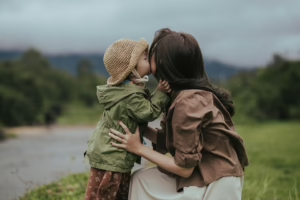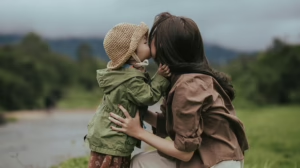Prejudices Defined: How Misconceptions Shape Our Worldview
In the intricate tapestry of human interaction and societal structure, prejudices serve as silent architects of our perceptions, guiding our thoughts and shaping our beliefs about ourselves and others. The term “prejudice” transcends mere discomfort; it embodies a complex mix of preconceived notions, societal conditioning, and psychological mechanisms. In exploring how these misconceptions shape our worldview, we engage in a multidimensional discourse that interweaves psychology, sociology, and cultural studies.
1. Understanding Prejudice
1.1 Definition and Nature of Prejudice
Prejudice can be defined as an unfavorable opinion or feeling formed beforehand or without knowledge, thought, or reason. It often manifests as stereotypes—fixed and oversimplified beliefs about a group of people. The implications of prejudice extend beyond individuals to communities and entire societies, affecting social dynamics and the structures of power.
1.2 Types of Prejudices
Prejudices can be categorized into several forms, including but not limited to:
- Racial Prejudice: Discrimination based on an individual’s race or ethnicity.
- Gender Prejudice: Bias against individuals based on their gender, often manifesting in the form of misogyny or sexism.
- Religious Prejudice: Negative attitudes and discrimination towards individuals based on their religious beliefs.
- Age Prejudice: Ageism often results in discrimination against younger or older individuals.
- Disability Prejudice: Misconceptions about disabilities can lead to exclusion and marginalization of individuals.
1.3 Historical Context
Throughout history, prejudices have been utilized to justify systemic inequalities and enact oppression. From colonial policies that marginalized indigenous populations to contemporary issues of racial profiling, the historical context of prejudices exhibits a pattern of power dynamics, wherein dominant groups exert control over marginalized populations.
2. The Psychological Underpinnings of Prejudice
2.1 Social Identity Theory
Henri Tajfel and John Turner developed Social Identity Theory, positing that individuals derive a significant portion of their identity from the groups they belong to. This categorization can lead to in-group favoritism, where individuals exhibit bias towards their own group while discriminating against outsiders. This behavioral pattern forms foundational levels for understanding prejudice at a psychological level.
2.2 Cognitive Dissonance
Cognitive dissonance refers to the mental discomfort experienced when holding contradictory beliefs or values. To alleviate this tension, individuals might reinforce their prejudiced views by rejecting evidence or rationalizing discriminatory behavior. This phenomenon perpetuates a cycle of prejudice and reinforces existing stereotypes.
2.3 Implicit Bias
Implicit biases are unconscious attitudes or stereotypes that affect our understanding and actions. The subtlety of these biases makes them particularly insidious, as they can shape behavior without individuals’ consciousness or intent. Such biases often underpin systemic discrimination, highlighting how deep-rooted cultural narratives perpetuate prejudice within social frameworks.
3. Social Constructs and Cultural Influences
3.1 Media Representation
Media plays a significant role in shaping societal perceptions. Stereotypes are often reinforced through film, television, and news outlets. Misrepresentation or lack of representation can perpetuate harmful narratives, influencing public opinion and feeding into existing prejudices. Conversely, positive representation can challenge stereotypes and promote understanding.
3.2 Education and Socialization
From an early age, educational systems and families transmit cultural norms and values, which often include prejudiced perspectives. Curriculum design, teacher attitudes, and peer interactions can all contribute to the development or mitigation of prejudices. Education must include critical thinking to challenge misconceptions and propagate inclusivity.
3.3 Political Narratives
Political rhetoric and policies often reflect and perpetuate societal prejudices. Politicians may exploit fear and division to garner support, magnifying existing biases within the population. Discourses surrounding immigration, crime, and national identity frequently mobilize prejudiced sentiments, shaping the collective worldview.
4. The Impact of Prejudice on Society
4.1 Social Segregation
Prejudices can result in social segregation, where individuals tend to associate primarily with those who share similar backgrounds and beliefs. This segregation fosters an environment where misunderstanding and mistrust thrives, contributing to a cycle of ignorance that perpetuates division.
4.2 Economic Disparities
Prejudice can generate economic inequalities, restricting access to opportunities based on biased perceptions. Marginalized groups often face discrimination in hiring practices, wage gaps, and promotional opportunities, which cumulatively affect their economic mobility and quality of life.
4.3 Psychological Consequences
The impact of prejudice extends beyond societal frameworks, affecting the mental health of both victims and perpetrators. Individuals experiencing discrimination may suffer from anxiety, depression, and decreased self-esteem, while those embodying prejudiced attitudes may experience cognitive dissonance, internal conflict, or feelings of guilt.
5. Challenging Prejudices
5.1 Awareness and Education
Creating awareness about the existence and implications of prejudices is the first step toward combating them. Educational initiatives aimed at promoting inclusivity, diversity, and critical thinking can cultivate an environment where individuals scrutinize their biases and dismantle stereotypes.
5.2 Dialogue and Engagement
Encouraging open dialogue among different groups can dismantle barriers and foster understanding. Community engagement initiatives that promote interactions among diverse populations help humanize experiences and challenge misconceptions, forging connections that transcend prejudiced narratives.
5.3 Policy Reform
Structural changes in policies at institutional levels are essential for addressing systemic prejudices. Initiatives aimed at promoting diversity within workplaces, schools, and governance can cultivate a more inclusive society that actively works against the perpetuation of biases.
Conclusion
Prejudices, deeply embedded within the fabric of society, wield immense power over our perceptions and interactions. As we endeavor to understand the nature of prejudices, we unveil the mechanisms that mold our beliefs about ourselves and the world around us. From psychological underpinnings to cultural influences, the shaping of our worldview is a dynamic interplay of perception, narrative, and action.
While combating prejudices may seem daunting, fostering awareness, encouraging dialogue, and enacting policies for social reform can create pathways toward a more equitable and inclusive future. The journey towards dispelling misconceptions and challenging biases is crucial for personal growth and societal change. By actively engaging in this critical discourse, we can reshape our worldviews, ultimately leading to a more just society.
This article offers a comprehensive overview of the phenomenon of prejudice and its effects on our worldview, underscoring the complexities involved in addressing and dismantling these misconceptions. It is crucial to remember that as individuals, we hold the power to challenge our biases and foster a more accepting and understanding world.

























Add Comment